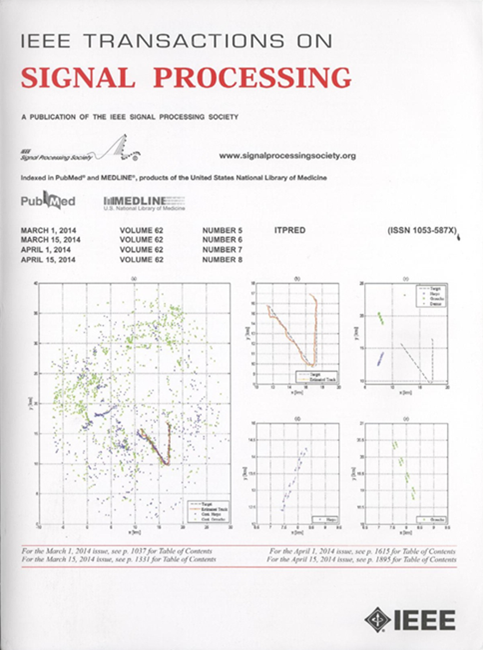Intelligent Reflecting Surface-Assisted NLOS Sensing With OFDM Signals
IF 4.6
2区 工程技术
Q1 ENGINEERING, ELECTRICAL & ELECTRONIC
引用次数: 0
Abstract
This work addresses the problem of intelligent reflecting surface (IRS) assisted target sensing in a non-line-of-sight (NLOS) scenario, where an IRS is employed to facilitate the radar/access point (AP) to sense the targets when the line-of-sight (LOS) path between the AP and the target is blocked by obstacles. To sense the targets, the AP transmits a train of uniformly-spaced orthogonal frequency division multiplexing (OFDM) pulses, and then perceives the targets based on the echoes from the AP-IRS-targets-IRS-AP channel. To resolve an inherent scaling ambiguity associated with IRS-assisted NLOS sensing, we propose a two-phase sensing scheme by exploiting the diversity in the illumination pattern of the IRS across two different phases. Specifically, the received echo signals from the two phases are formulated as third-order tensors. Then a canonical polyadic (CP) decomposition-based method is developed to estimate each target’s parameters including the direction of arrival (DOA), Doppler shift and time delay. Our analysis reveals that the proposed method achieves reliable NLOS sensing using a modest quantity of pulse/subcarrier resources. Simulation results are provided to show the effectiveness of the proposed method under the challenging scenario where the degrees-of-freedom provided by the AP-IRS channel are not enough for resolving the scaling ambiguity.利用 OFDM 信号的智能反射面辅助 NLOS 传感
当雷达/接入点(AP)与目标之间的视距(LOS)路径被障碍物阻挡时,采用智能反射面(IRS)帮助雷达/接入点(AP)感知目标。为了感知目标,接入点发射一列间隔均匀的正交频分复用(OFDM)脉冲,然后根据接入点-IRS-目标-IRS-接入点信道的回波感知目标。为了解决与 IRS 辅助 NLOS 感知相关的固有缩放模糊问题,我们提出了一种两阶段感知方案,利用 IRS 在两个不同阶段的照明模式多样性。具体来说,两个阶段的接收回波信号被表述为三阶张量。然后,开发出一种基于典型多面体(CP)分解的方法来估计每个目标的参数,包括到达方向(DOA)、多普勒频移和时延。我们的分析表明,所提出的方法可以利用少量脉冲/子载波资源实现可靠的 NLOS 感测。仿真结果表明,在 AP-IRS 信道提供的自由度不足以解决缩放模糊性这一具有挑战性的情况下,所提出的方法是有效的。
本文章由计算机程序翻译,如有差异,请以英文原文为准。
求助全文
约1分钟内获得全文
求助全文
来源期刊

IEEE Transactions on Signal Processing
工程技术-工程:电子与电气
CiteScore
11.20
自引率
9.30%
发文量
310
审稿时长
3.0 months
期刊介绍:
The IEEE Transactions on Signal Processing covers novel theory, algorithms, performance analyses and applications of techniques for the processing, understanding, learning, retrieval, mining, and extraction of information from signals. The term “signal” includes, among others, audio, video, speech, image, communication, geophysical, sonar, radar, medical and musical signals. Examples of topics of interest include, but are not limited to, information processing and the theory and application of filtering, coding, transmitting, estimating, detecting, analyzing, recognizing, synthesizing, recording, and reproducing signals.
 求助内容:
求助内容: 应助结果提醒方式:
应助结果提醒方式:


